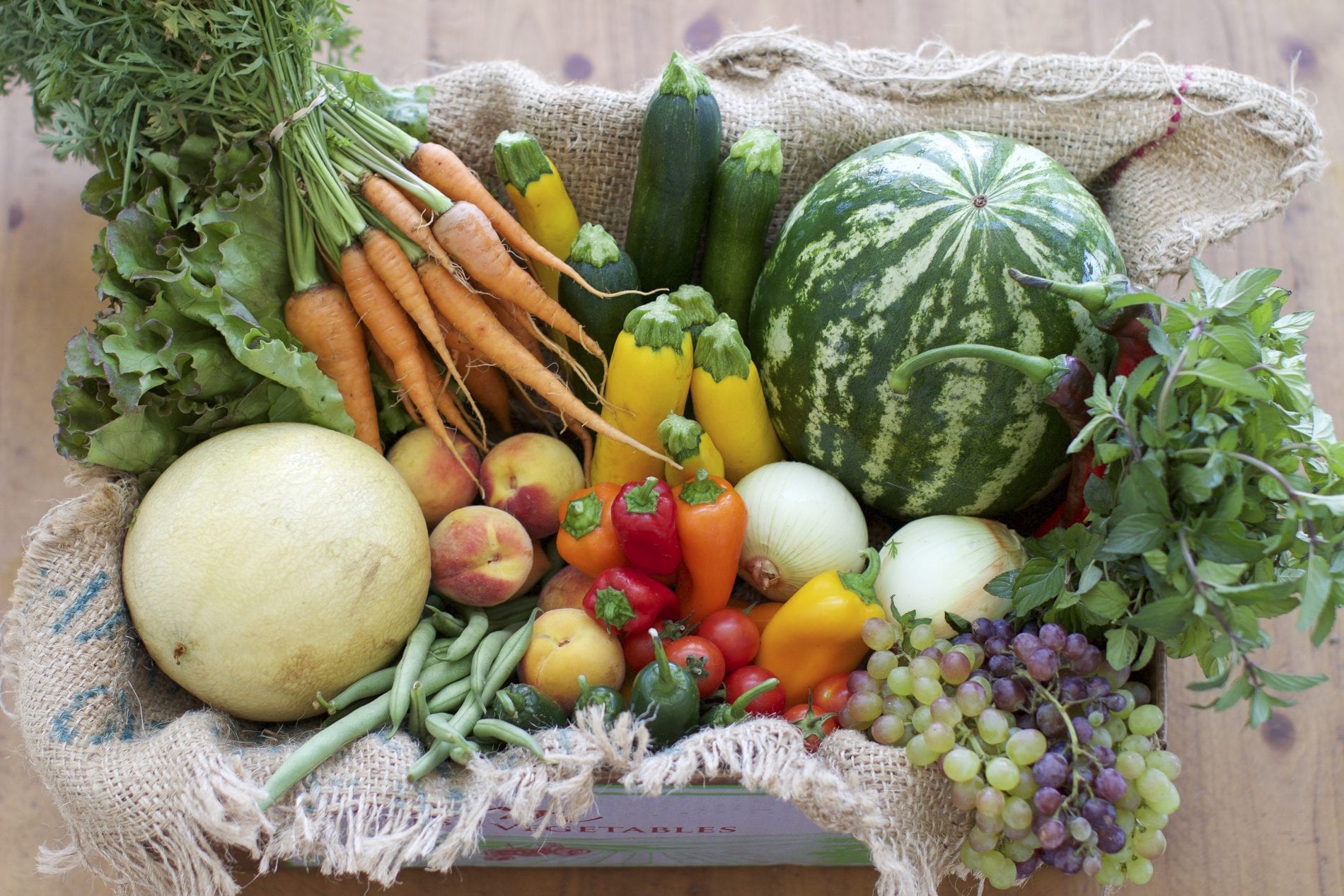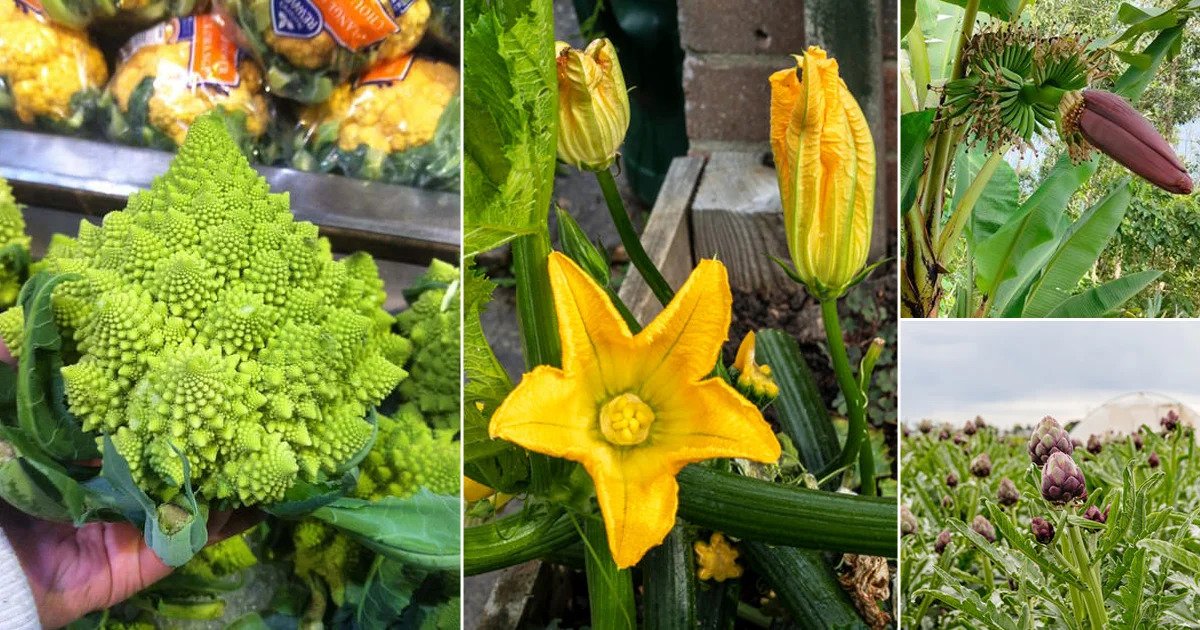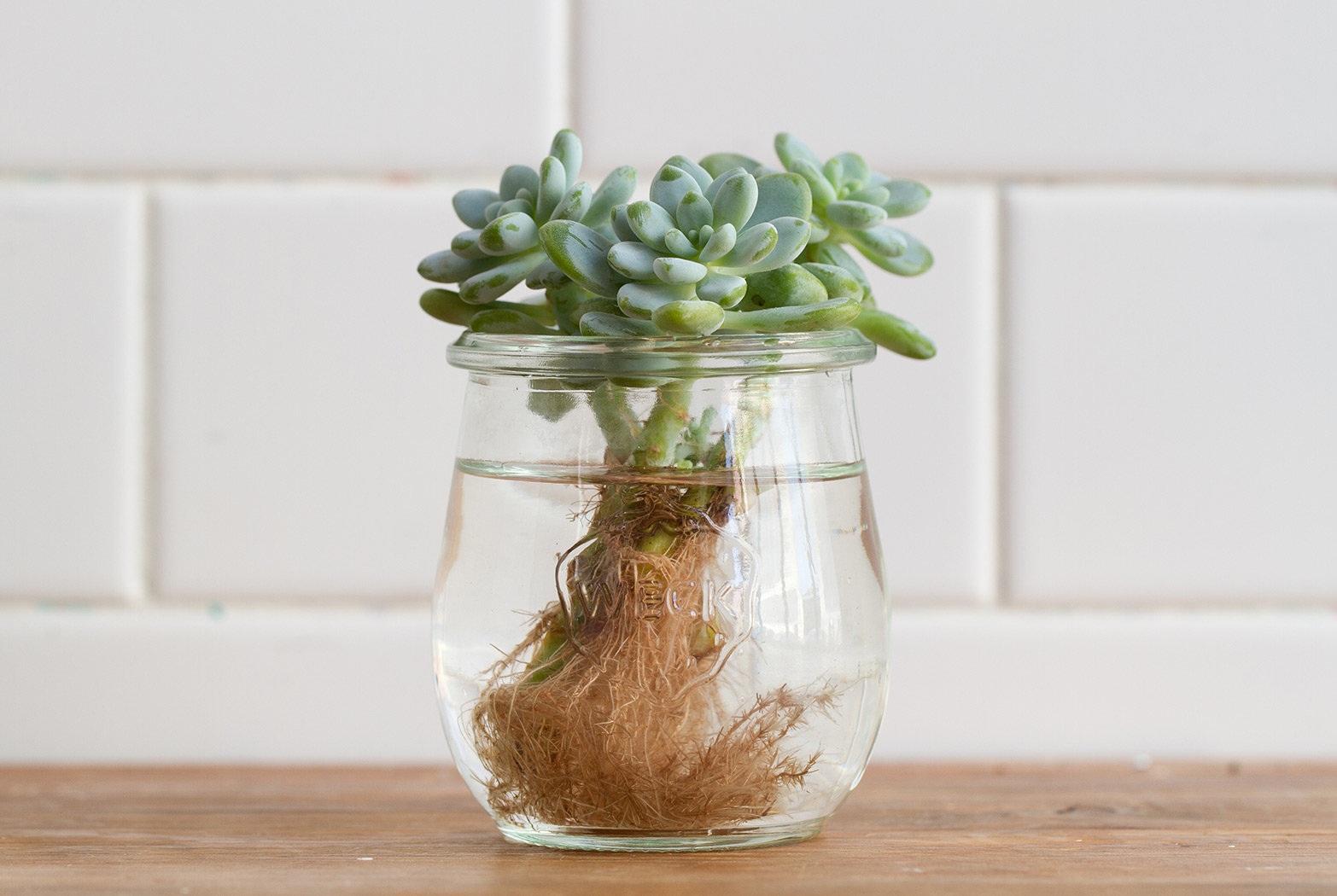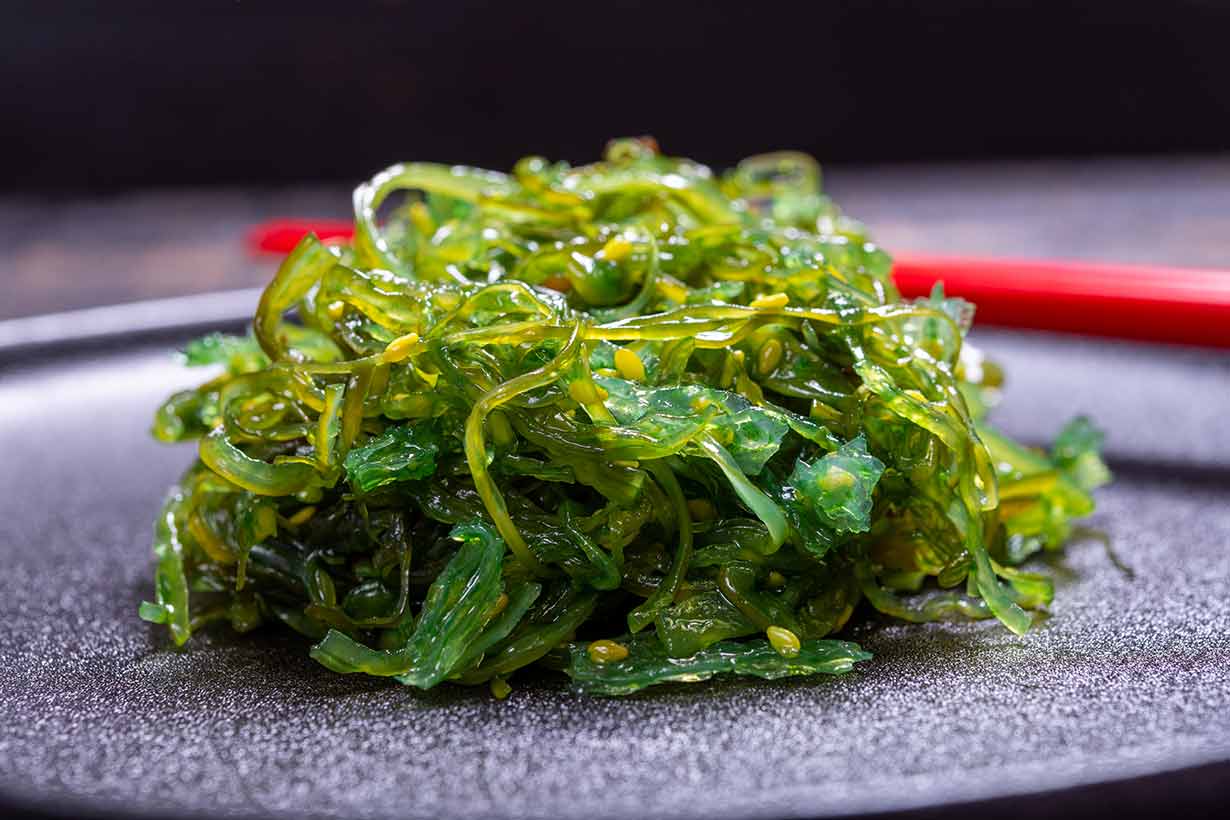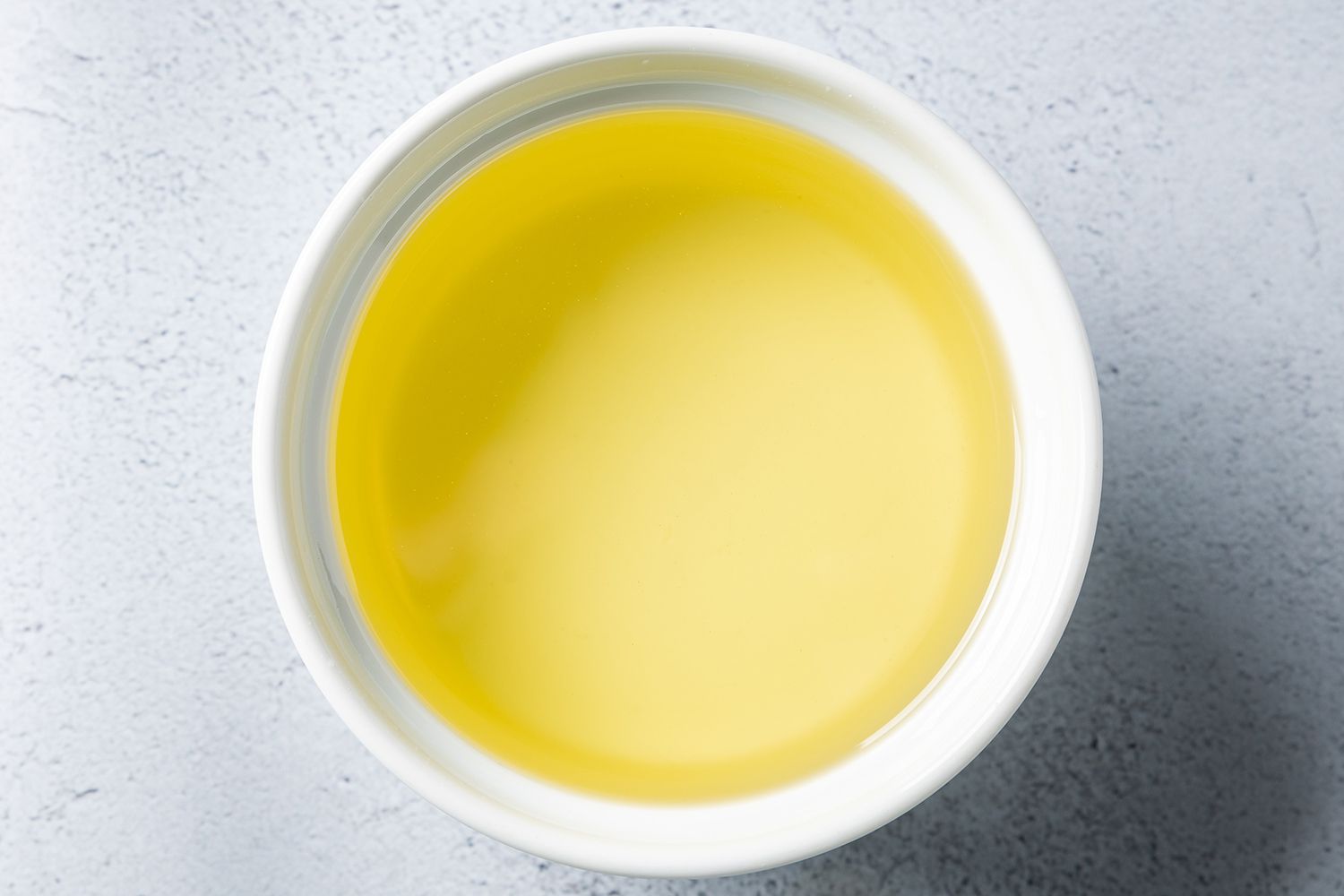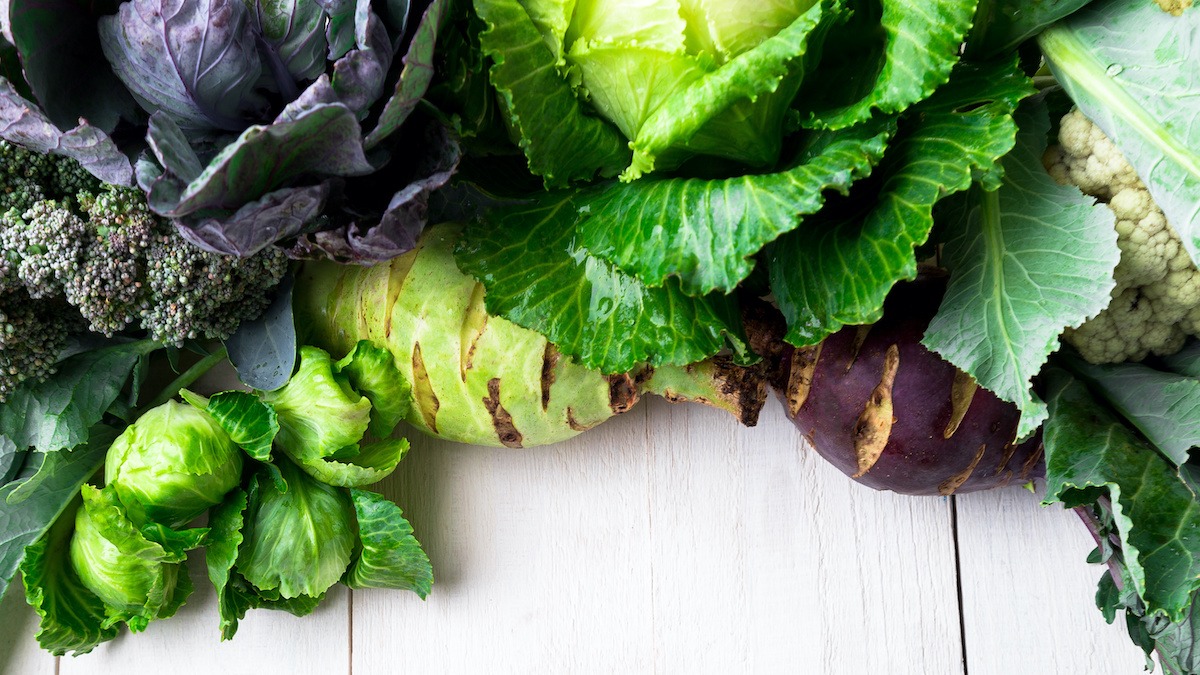Home>Gardening News and Trends>Gardening Trends>What Is Vegetative Propagation?


Gardening Trends
What Is Vegetative Propagation?
Modified: February 3, 2024
Learn about the popular gardening trend of vegetative propagation. Discover how this technique allows you to propagate plants without relying on seeds, and enhance your gardening skills
(Many of the links in this article redirect to a specific reviewed product. Your purchase of these products through affiliate links helps to generate commission for Chicagolandgardening.com, at no extra cost. Learn more)
Table of Contents
Introduction
Gardening is not only a fulfilling hobby but also a way to beautify our surroundings and enhance our connection with nature. One fascinating aspect of gardening is plant propagation, the process of producing new plants from existing ones. While seeds are the most common way to propagate plants, there is another method that has gained popularity in recent years – vegetative propagation.
Vegetative propagation, also known as asexual reproduction, is the process of creating new plants from various vegetative parts of a parent plant, such as stems, leaves, or roots. Unlike sexual reproduction, which involves the fusion of male and female gametes to produce seeds, vegetative propagation allows gardeners to create identical copies, or clones, of their favorite plants.
This method of propagation has been used for centuries and has its roots in ancient gardening practices. Nowadays, vegetative propagation techniques have become more advanced, allowing gardeners to reproduce plants with desirable traits, such as disease resistance or improved flower production.
In this article, we will explore the methods of vegetative propagation, examine their advantages and disadvantages, and provide examples of plants that can be propagated vegetatively. Whether you’re a seasoned gardener or just starting out, understanding vegetative propagation can open up a world of opportunities to expand your garden and increase the diversity of plants in your landscape.
Definition of Vegetative Propagation
Vegetative propagation, also referred to as asexual reproduction, is the process of creating new plants from vegetative parts of a parent plant, such as stems, leaves, or roots. Unlike sexual reproduction, which involves the fusion of male and female gametes to produce seeds, vegetative propagation results in offspring that are genetically identical to the parent plant.
This method of propagation allows gardeners to reproduce plants with desired characteristics, such as disease resistance, uniformity, or specific flower colors. It is commonly used in horticulture to propagate ornamental plants, fruit trees, and crops in a controlled and efficient manner.
Vegetative propagation can occur naturally or be induced through human intervention. In nature, plants have various mechanisms to propagate vegetatively. For example, some plants produce runners that develop new plants at the end of their stems, while others develop offsets or suckers that can be detached and planted to grow into new plants.
However, gardeners often employ specific techniques to propagate plants vegetatively. These techniques allow for greater control over the propagation process and facilitate the production of large quantities of identical plants.
Overall, vegetative propagation is a valuable tool in gardening and horticulture, enabling the rapid multiplication of plants with desirable traits. The ability to create clones of favored plants provides gardeners with a means to preserve and propagate their favorite varieties, ensuring their continued existence and enjoyment for future generations.
Methods of Vegetative Propagation
There are several methods commonly used for vegetative propagation, each suited to different types of plants and specific desired outcomes. Let’s explore four of the most common methods:
- Cuttings: This is the simplest and most widely used method of vegetative propagation. It involves taking a piece of stem, leaf, or root from a parent plant and placing it in a growing medium where it can develop roots. The cutting develops into a new plant that is genetically identical to the parent plant.
- Layering: Layering is a technique where a low-hanging branch or stem of a parent plant is bent down and partially buried in the ground or in a container. As the buried portion comes into contact with the soil, it forms roots and eventually detaches from the parent plant, becoming a new individual.
- Grafting: Grafting involves joining a piece of one plant (called the scion), which carries the desired traits, onto another plant (called the rootstock), which provides the root system. The scion and the rootstock are carefully joined together, and over time, they grow together, creating a new plant that displays the combined characteristics of both parent plants.
- Budding: Budding is similar to grafting but involves attaching a bud instead of a whole stem. A bud with a small piece of bark from the desired plant is inserted into an incision made in the bark of the rootstock, allowing it to grow and develop into a new plant with the desired traits.
These methods of vegetative propagation offer unique advantages and are employed based on the characteristics of the plant species and the desired outcomes. Gardeners often experiment with different techniques to achieve successful propagation, and with practice, they can become proficient in these methods.
Additionally, advancements in agriculture and horticulture have led to the development of specialized tools and techniques that enhance the success rate of vegetative propagation. These methods have revolutionized the production of large quantities of plants with desired traits, allowing for a more efficient and effective propagation process.
By employing these various methods, gardeners and horticulturists can expand their collection of plants, reproduce exceptional varieties, and ensure the preservation of valuable plant genetics.
Cuttings
One of the most popular methods of vegetative propagation is through cuttings. Cuttings involve taking a part of a parent plant, such as a stem, leaf, or root, and encouraging it to develop roots and grow into a new plant. This method is widely used due to its simplicity and high success rate.
There are several types of cuttings, including stem cuttings, leaf cuttings, and root cuttings, each suited to different plant species and growth patterns. Stem cuttings are the most common and involve taking a section of stem, typically with a few nodes, and removing any leaves from the lower portion. The cutting is then inserted into a rooting medium, such as soil or water, where it forms roots and begins to grow.
Successful stem cuttings require specific conditions, including the right time of year, proper hormone treatments, and the appropriate growing environment. Many plant species, such as herbs, succulents, and houseplants, can be easily propagated through stem cuttings, making it an accessible and cost-effective method for home gardeners.
Leaf cuttings involve taking a leaf or leaflet from a parent plant and placing it in a rooting medium. Some plants, such as African violets and snake plants, readily produce new roots from leaf cuttings. Root cuttings, on the other hand, involve taking a section of a parent plant’s root and encouraging it to produce new shoots and roots.
The success rate of cuttings can be improved by using rooting hormones, which stimulate root growth and increase the chances of successful propagation. Additionally, providing ideal growing conditions, such as maintaining proper humidity levels and temperature, can enhance the rooting process.
Once the cutting has developed roots and new growth, it can be transplanted into a pot or the garden, where it will continue to grow into a mature plant. The resulting plant is genetically identical to the parent plant, allowing gardeners to reproduce their favorite varieties and maintain desirable traits.
Cuttings offer several advantages in vegetative propagation. They are a relatively quick method of propagation, allowing gardeners to produce new plants within a matter of weeks or months. Cuttings also provide an efficient means of reproducing plants that do not produce seeds or are difficult to grow from seeds.
However, there are some limitations to consider with cuttings. Some plant species may be more challenging to propagate through cuttings, requiring specialized techniques or conditions. Additionally, certain plants may not root readily, leading to lower success rates.
Overall, cuttings are a versatile and accessible method of vegetative propagation, offering gardeners the opportunity to expand their plant collection and preserve their favorite varieties.
Layering
Layering is a method of vegetative propagation that involves the bending and burying of a low-hanging branch or stem of a parent plant, which then develops roots and detaches to become a new individual. This technique is particularly useful for plants with flexible branches that can be easily manipulated.
There are a few different types of layering methods, including simple layering, air layering, and tip layering. Simple layering is the most basic form, where a portion of the stem is buried in soil, allowing it to develop roots while still attached to the parent plant. Once the roots have formed, the layer can be cut from the parent plant and planted as a new individual.
Air layering, on the other hand, involves creating a wound on a stem, typically by removing a ring of bark, and then covering it with a moist medium, such as sphagnum moss or damp cloth. The covered area is then wrapped in plastic to retain moisture. Over time, roots develop at the wound site, and once they are well-established, the layer can be cut from the parent plant and potted.
Tip layering is a variation of simple layering where the tip of a flexible stem is buried in soil, allowing it to develop roots and eventually detach from the parent plant. This method is commonly used for plants with long, trailing stems, such as strawberries or trailing vines like ivy.
Layering has several advantages as a propagation method. It allows for the production of new plants without causing harm to the parent plant. It also ensures that the new plants are already rooted and established, which increases their chances of survival and growth. Moreover, layering can be a useful technique for plants that are difficult to root through other methods, such as plants with woody stems or plants with a low success rate for cuttings.
However, layering may require some patience, as it can take several weeks or even months for roots to develop and for the layer to be ready for detachment from the parent plant. It is important to provide adequate moisture and care during the rooting process to ensure successful propagation.
Layering is a versatile and reliable method of vegetative propagation, allowing gardeners to easily expand their plant collection, create new individuals with desired traits, and rejuvenate older plants. With some practice and patience, gardeners can successfully propagate a wide range of plant species using this technique.
Grafting
Grafting is a technique used in vegetative propagation that involves joining two plant parts from different individuals to create a new plant. It is a common method employed in horticulture to combine the desirable qualities of two plants, such as disease resistance, increased productivity, or specific fruit characteristics.
The process of grafting involves selecting a scion, which is a piece of a desired plant that carries the desired traits, and a rootstock, which provides the root system for the new plant. The scion is carefully cut to fit and align with the rootstock, and the two parts are joined together, usually by connecting the cambium layers, which are responsible for growth and nutrient transport.
Grafting is commonly used for fruit trees, such as apples, citrus, and pears, as well as ornamental plants like roses and camellias. It allows gardeners to reproduce specific cultivars that cannot be easily grown from seeds and preserves the characteristics of the desired plant.
There are different types of grafting techniques, including whip and tongue grafting, cleft grafting, and bud grafting. Whip and tongue grafting involves making matching diagonal cuts on both the scion and rootstock, creating a tight fit when joined together. Cleft grafting involves making a vertical cut in the rootstock and then inserting the scion into the cleft. Bud grafting, also known as chip budding, involves inserting a bud from the desired plant into a T-shaped incision made in the rootstock.
Grafting offers several advantages in vegetative propagation. It allows for the rapid propagation of desired varieties, as the resulting plant grows more quickly compared to starting from a seed. Grafted plants also tend to have higher survival rates and earlier fruit production compared to plants grown from seeds.
Another advantage of grafting is the ability to produce plants with increased vigor or disease resistance. By selecting a rootstock that is known for its robustness or resistance to certain diseases, gardeners can improve the overall health and productivity of the grafted plant.
While grafting has numerous benefits, it does require some skill and knowledge to achieve successful union between the scion and rootstock. Additionally, care must be taken to properly maintain the graft site, provide appropriate support during the healing process, and ensure that the scion and rootstock are compatible with each other.
Grafting is a valuable technique in horticulture, offering a means to create new plants with specific characteristics and to propagate valuable varieties. With practice and the right approach, gardeners can master the art of grafting and enjoy the benefits of this technique in their gardening endeavors.
Budding
Budding is a method of vegetative propagation that involves inserting a bud from a desired plant onto a rootstock, allowing it to grow and develop into a new plant. This technique is commonly used for propagating fruit trees, roses, and other ornamental plants.
The process of budding begins by selecting a bud from the desired plant, usually taken from a dormant or actively growing shoot. A T-shaped incision is made on the bark of the rootstock, and the bud, along with a small piece of the underlying bark, is carefully inserted into the incision. The bud is then secured in place with a grafting tape or rubber tie.
One important consideration in budding is the timing. Depending on the plant species and climate, budding is typically performed during the summer months when the bark is easily separated from the wood and the buds are in a state of optimal growth. The bark also needs to be slipping, meaning it can be easily separated from the underlying wood.
There are different types of budding techniques, including chip budding, T-budding, and patch budding. Chip budding involves inserting a small chip of bark, including a bud, into a matching incision made in the rootstock. T-budding, as the name suggests, involves making a T-shaped incision on the rootstock and inserting the bud. Patch budding involves cutting a rectangular patch of bark from the rootstock and replacing it with a similar-sized patch containing a bud from the desired plant.
Budding offers several advantages in vegetative propagation. It allows for the rapid multiplication of desirable plant varieties, as multiple buds can be inserted onto a single rootstock. Budded plants also tend to have a higher success rate compared to other methods, as the buds are most likely to form a strong union with the rootstock.
Another advantage of budding is the ability to create new plants with specific traits. By selecting buds from plants that display desirable characteristics, such as disease resistance or unique flower colors, gardeners can propagate new plants with those same traits.
While budding can be a relatively straightforward method of propagation, it does require proper timing, technique, and care to achieve successful results. The bud and rootstock should be compatible with each other to ensure a successful union and the subsequent growth of a healthy new plant.
Overall, budding is an effective and popular method of vegetative propagation, allowing gardeners to efficiently propagate new plants with desired traits. With practice and attention to detail, gardeners can master the art of budding and expand their collection of plants with ease.
Advantages of Vegetative Propagation
Vegetative propagation offers several advantages for gardeners and horticulturists, making it a popular method of plant reproduction. Let’s explore some of the key benefits:
- Genetic Uniformity: One significant advantage of vegetative propagation is the ability to produce genetically identical plants. This means that the new plants will have the same desirable traits, such as flower color, fruit size, or disease resistance, as the parent plant. This uniformity ensures consistency and reliability in plant performance.
- Preservation of Desirable Traits: Vegetative propagation allows for the preservation and perpetuation of desirable traits that may be lost through sexual reproduction. This is particularly valuable for rare or endangered plant species, as well as unique cultivars that may be difficult to find or reproduce through other means.
- Quicker Establishment and Maturation: Plants propagated through vegetative methods, such as cuttings or grafting, tend to establish and mature more quickly compared to those grown from seeds. This means faster growth, earlier flowering, and a shorter time to enjoy the benefits of the plant.
- Consistency in Plant Traits: By reproducing plants vegetatively, growers can ensure consistency in their plant stock. This is particularly important for businesses that rely on producing and selling plants with specific characteristics, such as greenhouse operators or nursery owners.
- Propagation of Plants with Limited or No Seed Production: Some plants, such as certain cultivars or hybrids, do not produce viable seeds or produce very few seeds. Vegetative propagation provides a means to propagate and multiply these plants, ensuring their availability and widespread distribution.
- Ability to Overcome Seed Viability and Germination Issues: Seeds can be affected by factors such as moisture, temperature, light, or dormancy requirements, making seed germination challenging for some plant species. Vegetative propagation bypasses these issues, allowing gardeners to propagate plants without the need to worry about seed viability or germination hurdles.
These advantages make vegetative propagation an effective and reliable method for gardeners and horticulturists to propagate plants with desired traits, preserve valuable varieties, and ensure consistency in plant performance. Whether for personal gardening pleasure or commercial production, the benefits of vegetative propagation contribute to the success and diversity of plant cultivation.
Disadvantages of Vegetative Propagation
While vegetative propagation offers numerous advantages, there are also some disadvantages to consider when using this method of plant reproduction. Let’s explore these potential drawbacks:
- Lack of Genetic Variation: One significant disadvantage of vegetative propagation is the lack of genetic variation. As new plants are exact copies of the parent plant, they do not possess the genetic diversity that can result from sexual reproduction. This can limit the ability to adapt to changing environments and increase susceptibility to diseases and pests.
- Vulnerable to Pest and Disease Outbreaks: Because vegetatively propagated plants are genetically identical, they are more susceptible to pests and diseases that can quickly spread throughout the entire population. A single pathogen or insect infestation can potentially wipe out an entire crop or collection of plants.
- Propagation Difficulties: Vegetative propagation may require specific conditions, techniques, and skills to achieve successful results. Some plants may not readily root or graft, making propagation more challenging. It may also take time and practice to become proficient in the different propagation methods.
- Limitations on Genetic Improvement: With vegetative propagation, the genetic makeup of plants remains the same, limiting opportunities for genetic improvement through traditional breeding techniques. This may pose challenges in developing new traits or adapting plants to changing environmental conditions.
- Higher Costs: Vegetative propagation often requires additional resources, such as specialized tools, materials, and facilities, which can increase the overall cost compared to growing plants from seeds. This is particularly relevant for commercial growers who need to invest in equipment and infrastructure to support vegetative propagation on a large scale.
- Restricted Genetic Adaptation: As vegetative propagation produces genetically identical plants, they may have limited capacity to adapt to new or diverse environmental conditions. This can be a disadvantage in areas where the environmental conditions vary significantly, as the propagated plants may not be as suited to those conditions.
Despite these disadvantages, it is important to note that vegetative propagation continues to be a widely used and valuable method for plant reproduction. By understanding these limitations, growers can make informed decisions and employ appropriate practices to mitigate risks and maximize the effectiveness of vegetative propagation techniques.
Examples of Vegetative Propagation in Plants
Vegetative propagation is commonly used in horticulture to propagate a wide range of plants, including ornamentals, fruits, and certain vegetable crops. Let’s explore some examples of plants that can be successfully propagated using vegetative methods:
- Roses: Roses are often propagated through budding or grafting. Desired rose varieties, known as the scions, can be budded onto rootstocks to create new plants with the same characteristics. This method allows for the rapid multiplication of specific rose cultivars, ensuring that their unique traits are preserved.
- Orchids: Orchids can be challenging to propagate from seeds, but vegetative propagation methods, such as division or backbulb propagation, are commonly used. By carefully dividing the orchid plant’s pseudobulbs or backbulbs, gardeners can create new plants and maintain the desired traits of the parent plant.
- Citrus trees: Citrus trees, including lemons, oranges, and grapefruits, are often propagated through grafting. By grafting a scion from a desirable citrus tree onto a compatible rootstock, growers can ensure that the resulting tree produces high-quality fruit with the desired characteristics.
- Strawberries: Strawberries can be propagated using a method called runner plants. The parent plant sends out long shoots, known as runners, which can develop roots and form new plants. These new plants can then be cut from the runner and transplanted, resulting in a bountiful harvest of strawberries.
- Pothos: Pothos is a popular houseplant that can be easily propagated through cuttings. Taking a stem cutting with several nodes and placing it in water or soil allows it to develop roots and grow into a new plant. This method enables gardeners to expand their pothos collection or share plants with friends and family.
- Apple trees: Apple trees are often propagated through grafting. Desired apple varieties, or scions, are grafted onto compatible rootstocks to create new trees. This method ensures that the resulting trees will produce apples with the desired flavor, texture, and resistance to pests and diseases.
These examples represent just a few of the many plants that can be successfully propagated using vegetative methods. From ornamental plants and fruit trees to houseplants and vegetables, vegetative propagation provides a means to preserve desirable traits, create identical copies of favorite plants, and efficiently propagate valuable varieties.
Conclusion
Vegetative propagation is a valuable tool in gardening and horticulture, allowing gardeners to reproduce plants with desired traits, preserve valuable varieties, and expand their plant collection. Through methods such as cuttings, layering, grafting, and budding, gardeners can create genetic clones of their favorite plants and ensure the propagation of specific traits.
While vegetative propagation offers distinct advantages, such as genetic uniformity, quicker establishment, and the ability to propagate plants with limited or no seed production, it also has its limitations. These include a lack of genetic variation, vulnerability to pest and disease outbreaks, the need for specialized techniques, limited genetic improvement, higher costs, and restricted genetic adaptation.
Despite these limitations, vegetative propagation continues to be widely used and valued in horticulture. From roses and orchids to citrus trees and strawberries, numerous plants thrive through this method of reproduction. By understanding the benefits and drawbacks of vegetative propagation and employing appropriate practices, gardeners can successfully propagate plants, preserve valuable varieties, and enjoy the rewards of a diverse and thriving garden.
